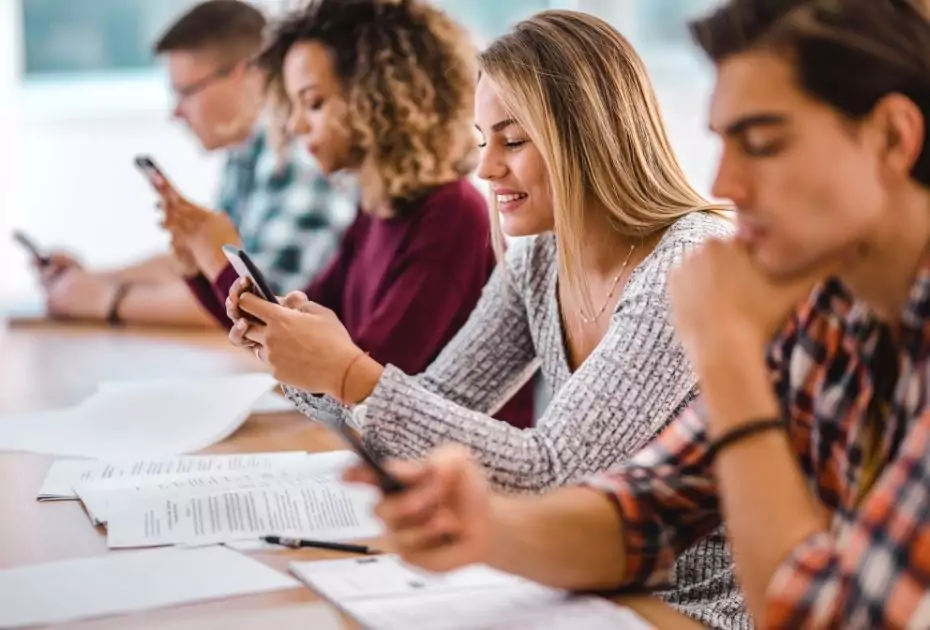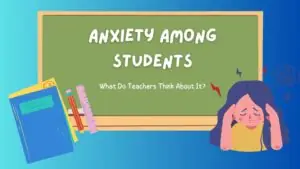
Key takeaways:
- A rising number of U.S. schools are implementing restrictions on cellphone use in class to combat distractions and mental health issues.
- Mixed reactions to the restrictions are evident, with some students and parents citing the necessity of phones for communication and emergency situations.
- Alternative solutions, like locking pouches for phones, are being considered, but cost factors influence the chosen methods.
- Experts warn against the dangers of focusing on cell phones during crisis situations, adding another layer of complexity to the debate.
In the post-pandemic classroom, one trend is noticeably taking hold across the United States. Schools are intensifying efforts to curtail students’ phone usage during school hours. Administrators express increasing concern about cell phones as a distraction and a strain on students’ mental health. This is a significant shift in policy, but with so much at stake, is it the right one?

✅ AI Essay Writer ✅ AI Detector ✅ Plagchecker ✅ Paraphraser
✅ Summarizer ✅ Citation Generator
The Nationwide Crackdown on Cellphone Usage
Various school districts across the U.S., from Ohio to California, are heeding a wake-up call. Elizabeth Lolli, the Superintendent of Dayton Public Schools, exemplifies the growing sentiment among educators. Faced with a noticeable increase in students focusing more on their phones than their studies, Lolli declared, “This has got to stop.” Schools are now implementing measures from strict regulation of phone use to outright bans in the classroom, aiming to alleviate learning disruption and mental health concerns among students, reports The Washington Post.
The Impact of the Pandemic on Cellphone Policies
The pandemic has irrevocably changed the education landscape, increasing dependence on digital tools. However, the downside has been an uptick in students’ cellphone usage, even during instructional time. This has exacerbated academic lag, with many districts falling behind by a year or more. Compounding the issue, school authorities are beginning to attribute escalating mental health issues to the pervasive influence of social media, often accessed via students’ phones. This has even led to a string of legal suits against various social media platforms.
The Resistance: Students and Parents Voice Their Concerns
Yet, this movement is not without resistance. Many students rely on their phones for a range of activities, including checking grades, arranging rides home, and keeping in touch with their parents, especially in case of emergencies. Parents, too, are divided on the issue. Some advocate for the necessity of phones in the context of safety and accessibility, raising questions about how schools can balance the need for focus in the classrooms and practical life realities.
School Districts Strive for Balance
School authorities are innovating in search of this balance. Superintendent Nancy J. Hines of the Penn Hills School District in Pittsburgh and Matthew Delaney, the chief schools’ officer in Virginia Beach, are among those wrestling with this issue. The tactics range from gathering and locking away cell phones during school hours to restricting their use during instructional periods. Yet, all these measures hinge on teacher vigilance and parental support to ensure their effectiveness.
Reactions to New Regulations
Reactions to the regulations are as diverse as the student body. Some, like Andrea Palomino-Jayo, a high school senior in Virginia Beach, welcome the reduced distraction, appreciating the renewed focus on class discussions. Teachers, too, are joining the chorus for stricter controls, with educators in Kansas asking for a district-wide ban during ongoing contract negotiations.
Promising Results and Continued Challenges
Despite the challenges, some school districts already see these regulations’ benefits. Bill Wilson, Superintendent of a system in Brush, Colorado, reported increased interaction between teachers and students, better focus, and less conflict in hallways. However, he also noted that some students had violated the rules more than once, indicating that compliance is still a work in progress.
The Question of Safety: Cellphones in Crisis Situations
In an era of regular news reports about school emergencies, parents like Rachel Whittemore, living in the suburbs of New York City, argue for the necessity of phones as a lifeline during crises. However, experts caution that it’s crucial to focus on the immediate surroundings rather than on a phone screen during emergencies. The balance between ensuring safety and reducing distractions is still debatable.
Conclusion: Schools Adapt to a Changing Environment
In a constantly evolving educational environment, striking the right balance between technology and focus is key. It’s a challenging task, and only time will tell if the latest cellphone regulations prove to be an effective solution. The approach may vary from district to district, but the aim remains to create an environment conducive to learning while addressing mental health concerns.
Related stories:
Why Aren’t Mobile Phones Banned in U.S. Schools? Teachers share opinions
New Strategies Unveiled to Boost English Learner Success in High Schools
Follow us on Reddit for more insights and updates.





Comments (0)
Welcome to A*Help comments!
We’re all about debate and discussion at A*Help.
We value the diverse opinions of users, so you may find points of view that you don’t agree with. And that’s cool. However, there are certain things we’re not OK with: attempts to manipulate our data in any way, for example, or the posting of discriminative, offensive, hateful, or disparaging material.